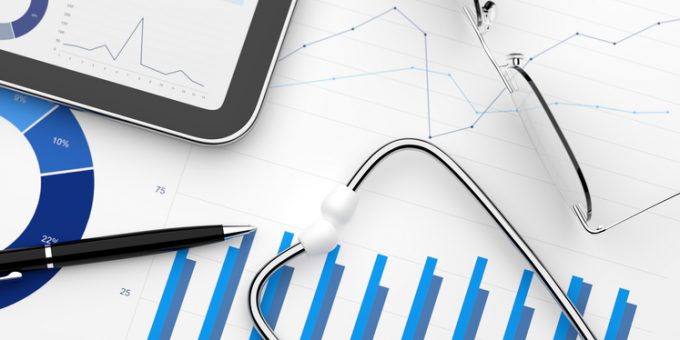
(INDIANAPOLIS) – The Indiana Manufacturers Association and We Ask America, today, released their first collaborative, statewide public opinion poll of Indiana. Voters were asked their opinions about the direction of the country and state, current job market, the job performance of its leaders, what issues matter most to them, and about healthcare costs and whether it has affected them or someone in their household.
Indiana voters are more encouraged about the direction of the state than they are in the direction of the country. That difference in opinion is also reflected in their opinions of elected officials. Voters are split on their opinion of President Trump’s job performance but give Governor Eric Holcomb better reviews. Hoosiers give the governor a strong grade on his leadership of the state and appear ready to give him another term as he heads into his re-election year.
One issue clearly affecting voters around the state is healthcare costs. Fifty-five percent (55%) of Hoosiers listed affordable healthcare as one of the top three issues they want the state legislature to focus on as they convene for the 2020 legislative session. One in three households have received an unexpected medical bill in the last year, and a majority of voters have seen their health insurance or out-of-pocket expenses increase in the past year.
“The IMA partnered with We Ask America to poll Hoosiers about the issues impacting businesses and individuals alike. Healthcare expenses are a critical issue for manufacturers. Hopefully the information in this poll is a call to action for policy leaders,” said IMA President and CEO Brian Burton.
Key Findings
Hoosiers are pessimistic about the direction of the country. Overall, just 37% of registered voters in Indiana feel that the country is headed in the right direction while a majority, 52%, say that things have gotten off on the wrong track. There is a large partisan split in how voters perceive the direction of the country, with 65% of self-identifying Republicans saying that the country is headed in the right direction, while just 29% of Independents and 5% of Democrats agree with that assessment. Conversely, 86% of Democrats, 51% of Independents, and 26% of Republicans believe it’s gotten off on the wrong track. Women are also far less enthused about the country than men. Forty-five percent (45%) of men say that the country is headed in the right direction versus 46% who say that it’s gotten off on the wrong track. Among women, just 29% say it’s headed in the right direction versus 58% who say it’s gotten off on the wrong track.
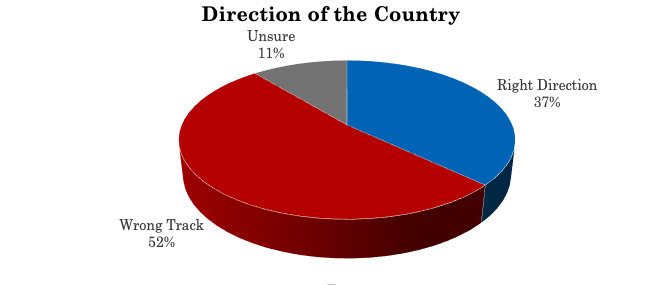
Voters are split on their opinion of President Trump’s job performance. Voter’s opinions about the direction of the country also appear directly related to their opinion of President Donald Trump’s job performance. Overall, the president’s job approval among registered Indiana voters sits just slightly underwater, with 47.4% approving and 47.7% disapproving. Among those who believe that the country is headed in the right direction, his approval sits at 92% approve and 8% disapprove. Of those that think the country has gotten off on the wrong track, his approval sits at 18% approve and 80% disapprove. As to be expected, this also falls mostly along partisan lines. Among Republicans, 85% approve of his job performance with 48% strongly approving, while just 15% disapprove. Among Democrats, just 7% approve while 87% disapprove. And among Independents, 36% approve while 52% disapprove. The president’s job approval sits worse with Independent women at net -22% (31% approve/52% disapprove) than with Independent men at net -12% (41% approve/52% disapprove). As was the case with the direction of the country, women are less approving of the president, with just 40% approving and 53% disapproving of his job performance. Among men, 55% approve and 41% disapprove.

While Hoosiers are down on the direction of the country, they are far more optimistic about the direction of the state. A near majority, 47%, of registered voters feel that things in Indiana are going in the right direction while just 36% say that it’s gotten off on the wrong track. As with the direction of the country, partisanship largely defines how voters believe the state is doing. Seventy-three percent (73%) of Republicans believe the state is headed in the right direction while 17% disagree. Among Democrats, 20% like the direction of the state and 61% disapprove. The real story, however, is with Independents whose opinions are split 38% right direction/38% wrong track. Additionally, the older you are, the more encouraged you are by the direction of the state. Among seniors, 57% believe things are going in the right direction versus 27% who say it’s gotten off on the wrong track. Among 50-64 year-olds, 47% say things are going in the right direction versus 35% who say wrong track. Forty-three percent (43%) of 35-49 year-olds say things are headed in the right direction while 37% say wrong track. And among 18-34 year-olds, just 40% say the state is headed in the right direction while 48% say it’s gotten off on the wrong track.

Voters believe the job market in Indiana is strong. While Hoosiers are optimistic about the direction of the state, they’re even more encouraged by the current job market in Indiana. Overall, 54% say that now is a good time to find a job while just 14% say it’s a bad time to find a job, and 25% say it’s neither a good nor a bad time. Sixty-one percent (61%) of men say that now is a good time to find a job while just 11% say it’s a bad time. Among women, 48% say that now is a good time to find a job while 17% say it is not.
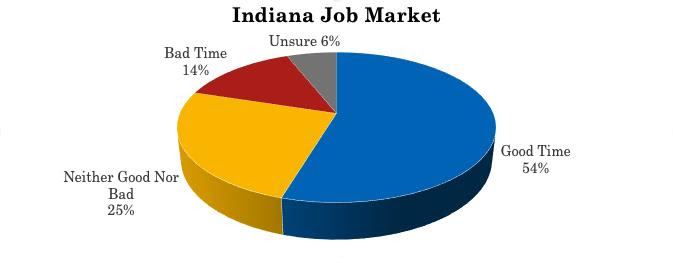
A majority of Hoosiers approve of Governor Holcomb’s job performance. Hoosiers like the direction the state is headed and are happy with the current job market and, as a result, have given Governor Eric Holcomb high marks in his leadership. Fifty-one percent (51%) of Indiana voters approve of the job Holcomb is doing as governor while just a quarter (25%) disapprove. While the governor is underwater with Democrats at a net -12% job approval (30% approve/43% disapprove), he sits +17% (40% approve/23% disapprove) with Independents and +61% (73% approve/12% disapprove) with Republicans. Among men, 61% approve of his job performance while just 23% disapprove. Among women, 41% approve while 28% disapprove. Governor Holcomb enjoys high marks around the state, with voters in the Indianapolis donut counties region giving him his strongest marks at 61% approve/23% disapprove (net +38%).
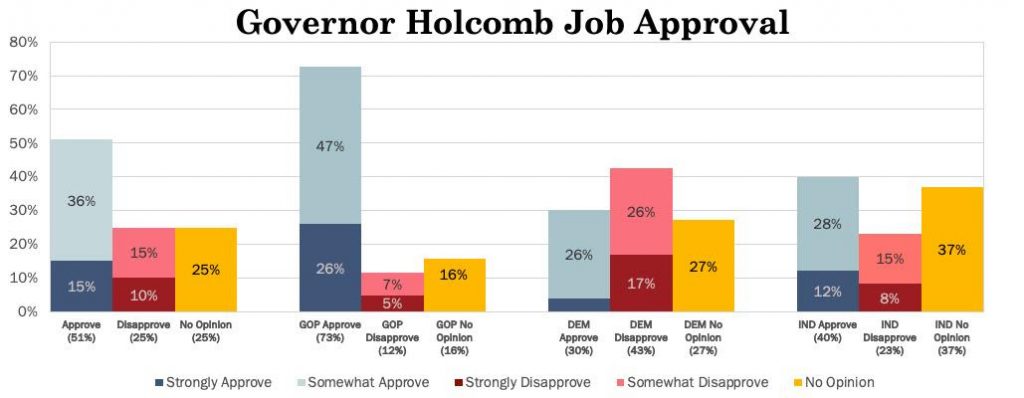
Governor Holcomb enters 2020 in control of his re-election. When asked whether he has done enough to deserve re-election, 26% of registered voters say outright that he has, while 25% say that he probably has. Twenty-four percent (24%) say that he has not, and 25% are unsure. While the surface numbers may appear less encouraging for the governor on whether Hoosiers believe that he deserves re-election or not, the underlying data suggests a very strong path towards re-election for Governor Holcomb. Among those that said probably, 74% approve of the governor’s job performance, 58% believe the state is headed in the right direction and nearly two-thirds (64%) of them say that it’s a good time to find a job in Indiana. Voters saying that he probably deserves re-election look far more probable than not at ultimately supporting the governor next year. Additionally, among those that are unsure, the governor’s job approval sits right-side up at 22% approve/12% disapprove. While there exists a path to knocking off the governor, it’s a narrow one.
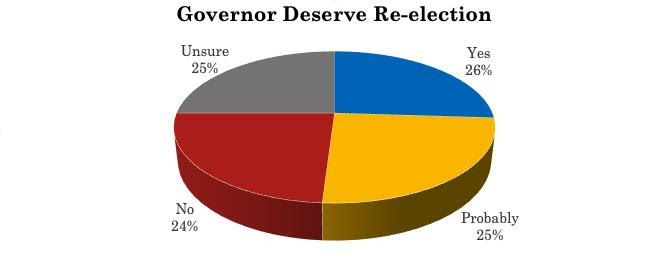
Indiana voters care about affordable healthcare and a stable economy. When asked to rank what issues they’d like the governor and legislators in Indianapolis to focus on in the new year, Hoosiers focused primarily on creating jobs and improving the economy and making healthcare more affordable. Overall, 22% listed jobs/economy as their top issue while 20% chose affordable healthcare. These were followed by a near three-way tie between increasing funding for public education, cutting taxes, and fighting crime and drugs. When combining respondents top 3 issues, 55% listed affordable healthcare, 50% jobs/economy, 46% education funding and 43% cutting taxes.

When asked about rising healthcare costs, Hoosiers are pretty clear in who they blame. When asked about a recent RAND study that showed Indiana having some of the highest hospital costs in the nation, 35% placed responsibility on doctors and hospitals overcharging or excessive fees for medical procedures and 22% on increases in insurance company premiums or lack of good coverage/accessibility within the system. Just 2% reported nothing, the system is fine. Of those that had listed making healthcare more affordable as their top priority for the legislature, 35% blamed hospitals overcharges and 22% cited insurance company premiums/lack of good coverage. One region that stands out across Indiana is the southwest, where nearly a majority, 45% of voters, placed the blame on hospitals overcharging. This is 7% higher than the next closest region, the northeast, at 38%.

One out of every three Indiana households received an unexpected medical bill this past year. Thirty-three percent (33%) of overall respondents reported that they or someone in their household received an unexpected medical bill in the last year. This disproportionately affected women and younger Hoosiers, with 37% of women compared to 29% of men receiving an unexpected bill. Among 18-34 year-olds, 47% received an unexpected bill. Thirty-six percent (36%) of 35-49 year-olds and 33% of 50-64 year-olds reported the same. Seniors reported the lowest rate at 19% saying they got a medical bill they had not expected. Residents in the southern regions of the state also reported higher rates of unexpected bills, with 42% of those in the southeast and 44% in the southwest receiving an unexpected bill, 10 points higher than the central and northern regions.

Over half of Hoosiers reported an increase in health care insurance or out-of-pocket costs in the last year. A majority, 54% of Indiana voters say that they or someone in their household experienced an increase in health care insurance costs or out-of-pocket costs. The increase in costs was generally similar across the board, however, it was slightly higher among women, who reported at 57% compared with men at 52%.

Methodology
This poll was conducted between December 5th and 15th, 2019 using online surveys. In all, 1,000 interviews were achieved and weighted by age, gender, race, and geography to reflect a representation of registered voters in Indiana. The margin of error for this survey is +/- 3.1% at a confidence interval of 95%.
Please note that some charts do not total 100% due to rounding.



